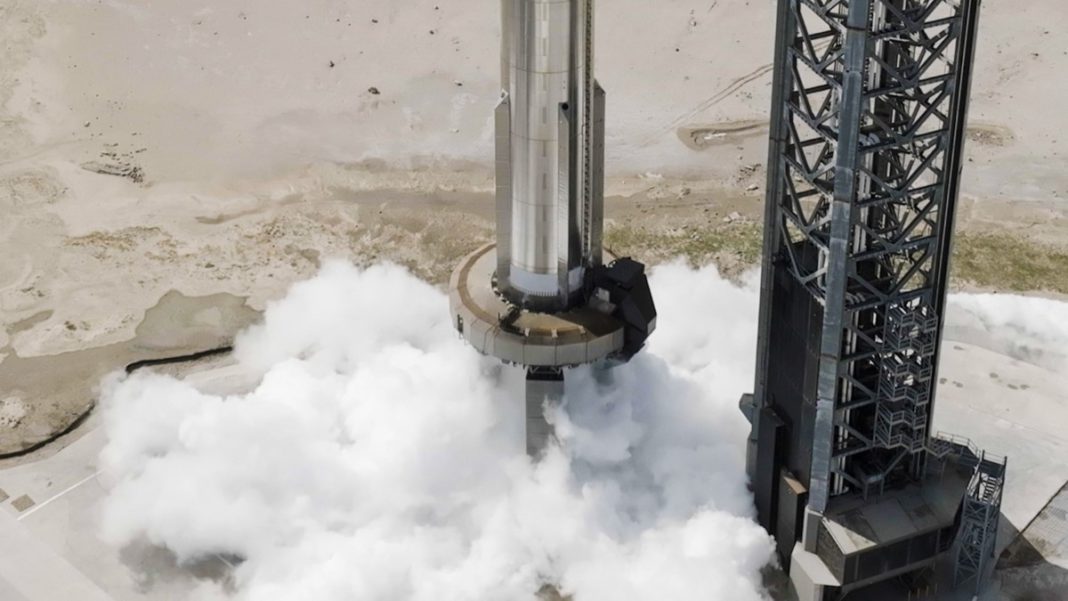UNITED STATES: In a significant leap forward for SpaceX’s Starship program, the Booster 9 first-stage prototype successfully conducted a static fire test on August 6th. Anchored to the orbital launch mount at SpaceX’s Starbase site in South Texas, the test saw 33 Raptor engines briefly ignite, propelling the project one step closer to its next milestone.
While the test wasn’t without its hiccups, with four engines shutting down prematurely, the overwhelming success of 29 out of 33 engines provided ample reason for celebration. The Booster 9 prototype and the launch mount emerged from the test unscathed, further instilling confidence in SpaceX’s ambitious endeavour.
Amidst the success, SpaceX’s John Insprucker commended the Starship team for their dedication and progress, highlighting that this achievement brings them closer to the next flight test.
The previous flight test, launched from Starbase on April 20th, aimed to send the Ship 24 upper-stage prototype on a trajectory around Earth.
However, technical challenges arose shortly after liftoff, forcing SpaceX to issue a self-destruct command, leading to the vehicle’s destruction high above the Gulf of Mexico. This setback not only resulted in the loss of the vehicle but also inflicted damage on Starbase’s orbital launch mount and surrounding infrastructure.
To prevent a repeat of such incidents, SpaceX implemented a water deluge system beneath the launch mount. This innovation, designed to mitigate the immense energy generated by Super Heavy’s 33 Raptors, showcased its effectiveness during the recent test as torrents of water sprayed toward the firing engines.
The upcoming flight test is set to feature the collaboration of Booster 9 and the Ship 25 upper-stage prototype, aligning with the objectives of the first liftoff. While the details of the launch date remain unclear, SpaceX’s founder and CEO, Elon Musk, expressed their intention to stay the course.
However, technical challenges aren’t the only hurdles SpaceX faces. A coalition comprising environmental and Indigenous groups is embroiled in a lawsuit against the U.S. Federal Aviation Administration (FAA).
The FAA had granted a license for Starship launches from the Starbase site, but the lawsuit asserts that the agency didn’t adequately evaluate the potential ecological impact of such liftoffs on the South Texas ecosystem. The legal action calls for a more rigorous environmental review before any more Starship missions proceed from the site.
As SpaceX continues to push the boundaries of space exploration, the successful static fire test serves as a testament to the perseverance of the Starship team. Despite the challenges and setbacks, the pursuit of innovation and progress remains unwavering on the path to realizing interplanetary travel.
Also Read: Niger Shuts Down Airspace after Refusing to Reinstate President



